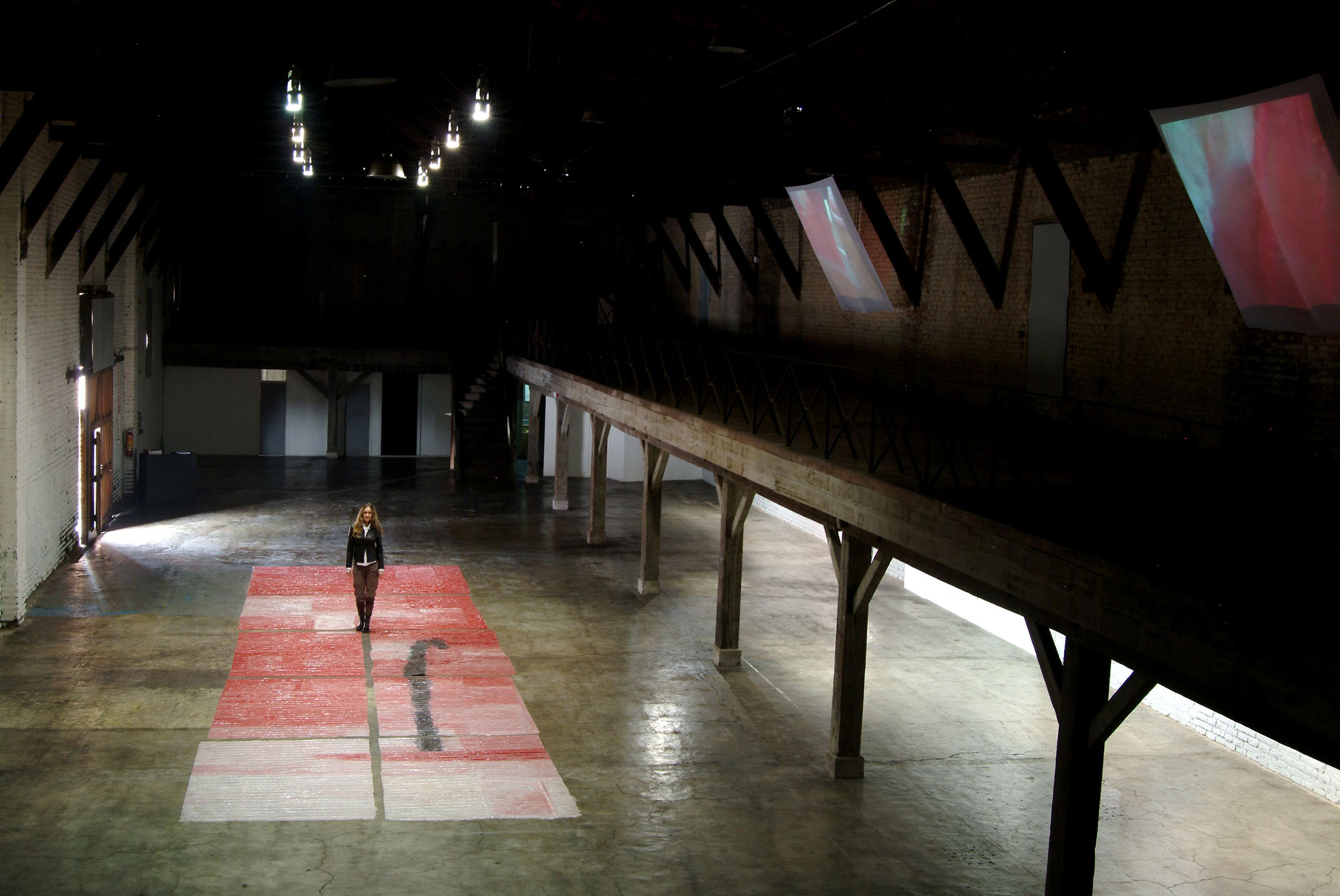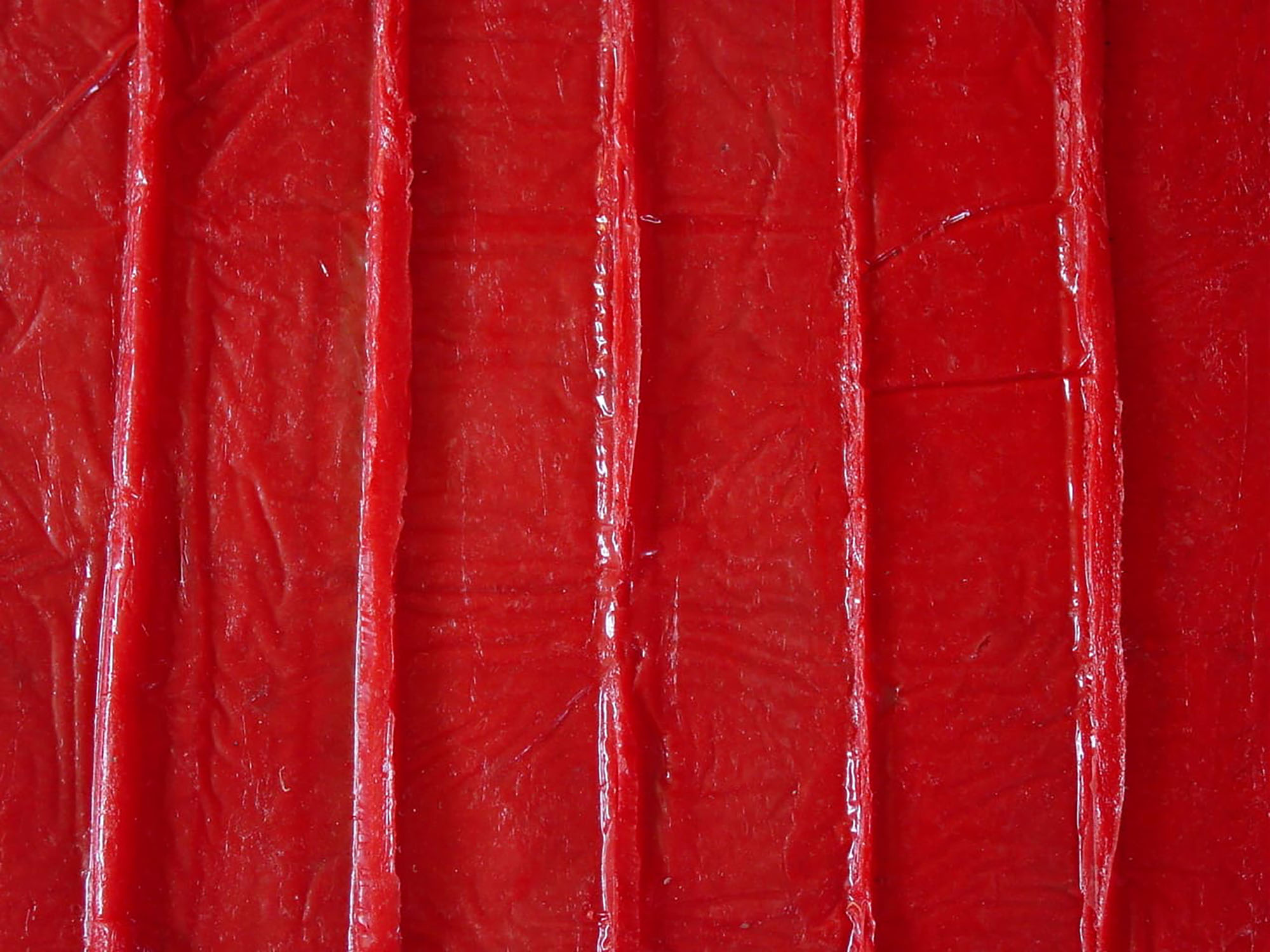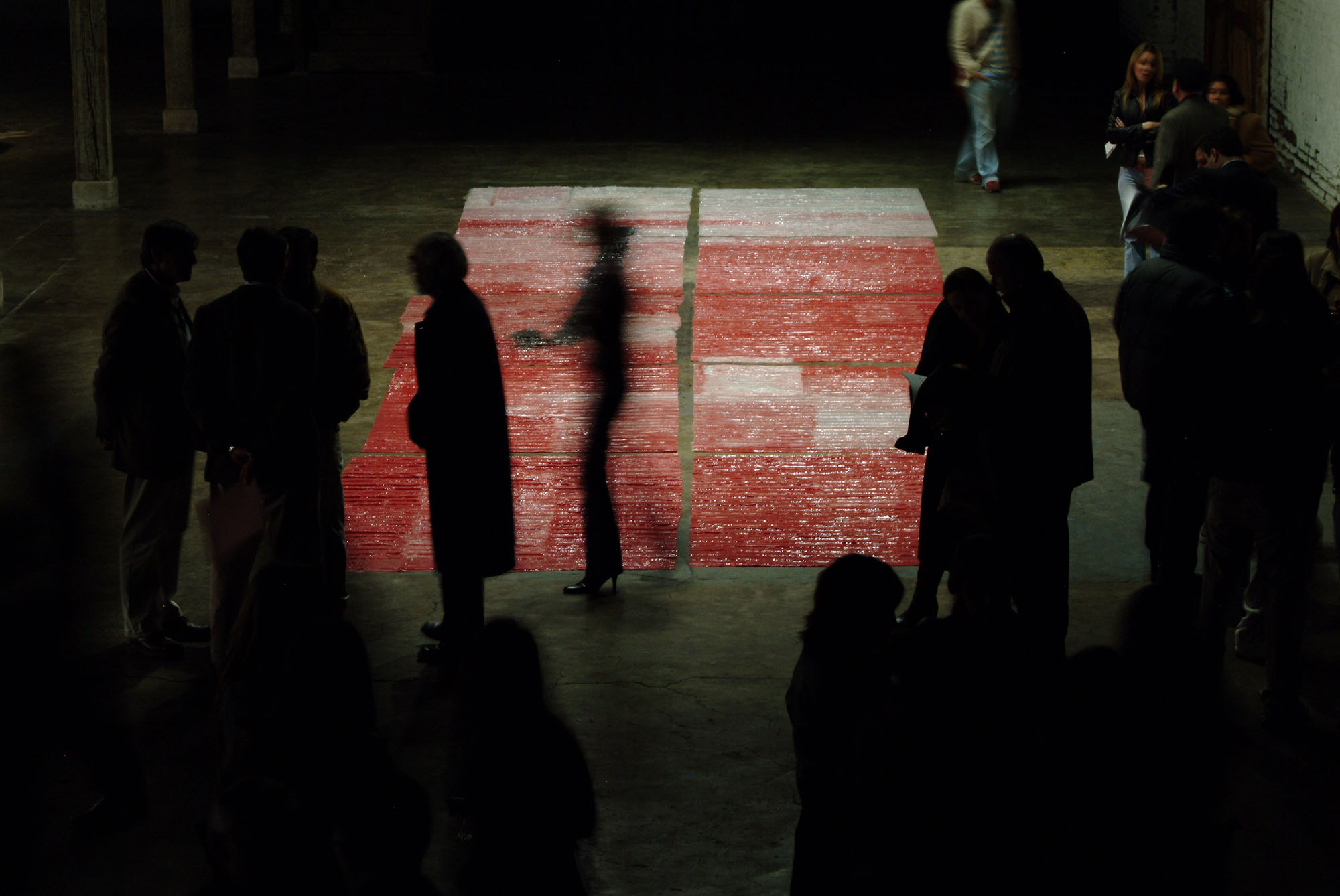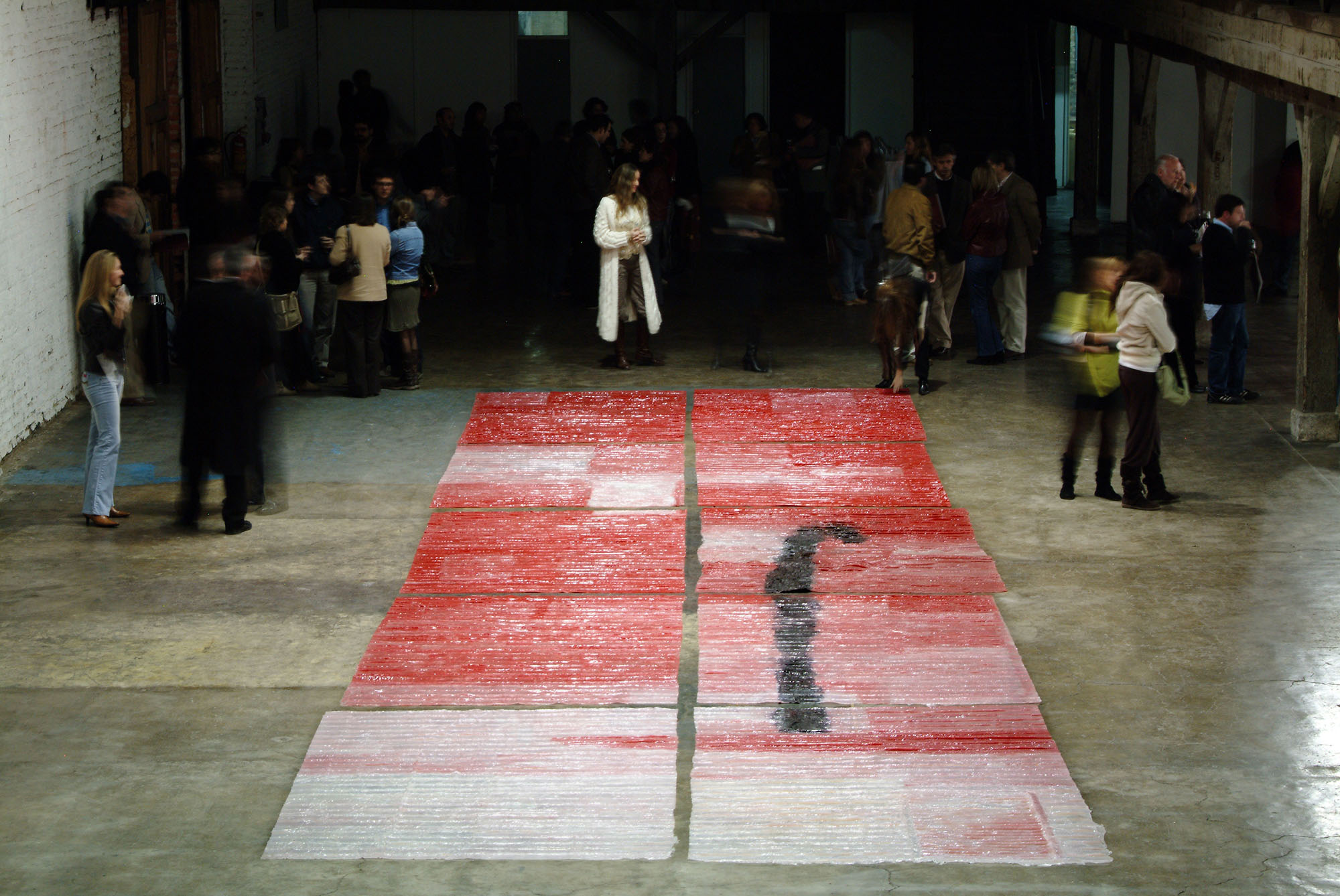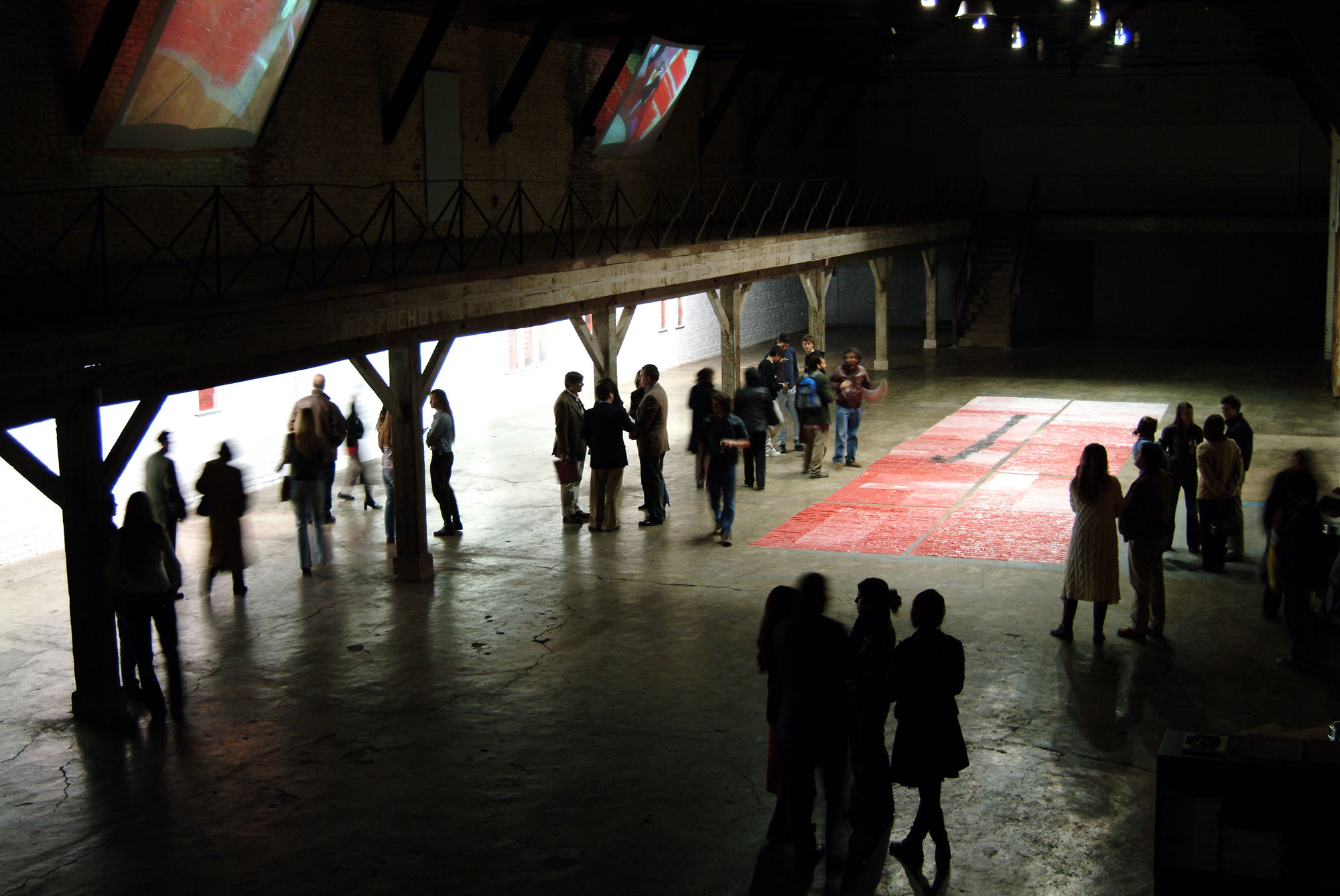The inherent fluidity of the human body always reveals hints of its interior, signifying that a bleeding body isn’t merely an absence of blood but a body in a constant state of transformation and exposure. In this dynamic, blood emerges as a versatile element that not only unites and connects but also serves as a canvas that encompasses both erotic and artistic dimensions.
The analogy between painting and blood unfolds mysteriously, where the act of bleeding becomes an announcement of painting’s revival. In these works employing silicone and oil pigments, they unveil the limits of the body’s internal fragility. Essentially, this represents a metonymy of blood’s transformation, serving as an exploration of life and death.
The wooden frame assumes an essential role, transforming into a grid that exerts pressure on the pigmented binder, leaving a distinctive mark during the drying process. This binder not only functions as support but also requires a performative relationship during the creation of the mark in these works. It’s an artistic process that engages with the body, where blood becomes a force transcending mere biology to explore deeper matters of identity, fragility, and resilience.
“I don’t know what is essential and what is accessory in a work of art. And above all, I don’t know what this thing, neither essential nor accessory, neither proper nor improper, that Kant calls the parergon is: for example, the frame. Where does the picture take place? Does it take place? Where does it begin? Where does it end? What is its limit? External. And its surface, between the two limits.”
Jacques Derrida The Truth in Painting. (Excerpt from the catalog “Recent Works 2004-2005”)

